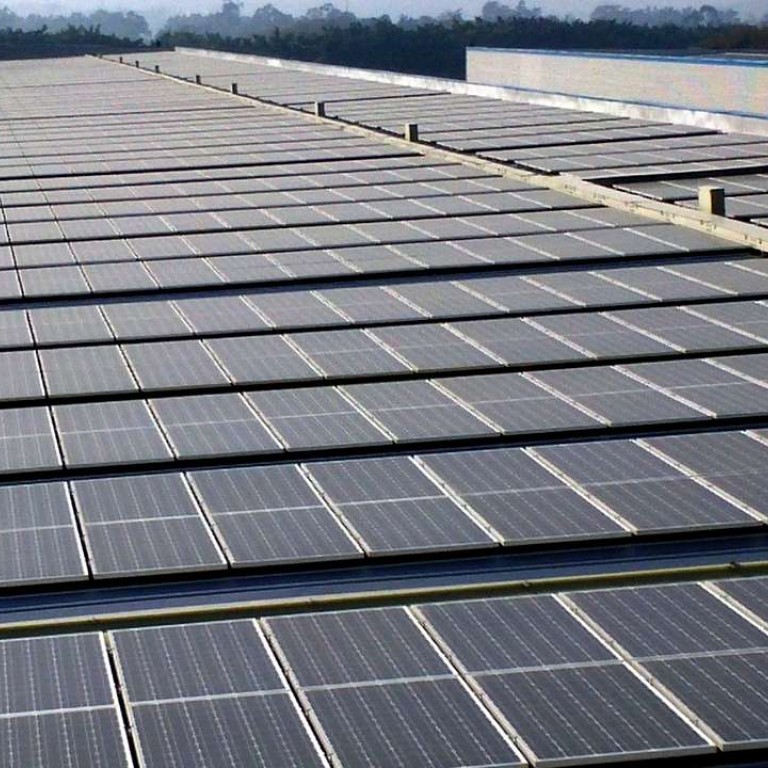
China Singyes to expand solar capacity in Guangdong amid northern grid bottlenecks
Singyes is steering clear of northern China, shifting its focus to raising capacity by 37 per cent by finishing projects in its home province
China Singyes Solar Technologies plans to spend up to 700 million yuan to raise its solar farms generation capacity by 37 per cent this year by finishing projects in its home province of Guangdong.
The Zhuhai-based firm aims to complete 102 mega-watts (MW) of projects in Guangdong, adding to the 271 MW it had at the end of last year, said financial controller and company secretary Jimmy Yu Chon-man.
“We should have no problem completing the projects in Guangdong, and perhaps also 20 MW in Hebei province,” he said. “As to 58.5 MW of projects pending power grid connection in northwest China, we can’t say for sure whether they will be connected this year.”
The advantage of Guangdong is that there is no grid bottleneck and subsidies payment arrears owed by the grid operators
Northwest China saw a solar farms construction boom in the past two years, mainly in the Xinjiang Uygur autonomous region. But small local demand and delays in building the necessary infrastructure to get connected to the power grid meant many projects were only able to send a fraction of their output to demand centres elsewhere.
Since last year, Singyes has refrained from investing in solar farms in northern China, given widespread grid bottlenecks. It has instead focused on its home market in Guangdong.
“The advantage of Guangdong is that there is no grid bottleneck and subsidies payment arrears owed by the grid operators,” said Yu. “But the downside is that high land costs and scarce land resources means only small-volume projects can be built.”
Yu said the company’s projects – those it owns and those owned by its solar farms developer customers – already account for roughly half the total 400 to 500 MW annual new installations Guangdong has seen in recent years.
As well as installing solar power generation systems for clients, Singyes also produces curtain walls – glass structures that shield buildings from the elements.

Excluding accounting gains from convertible bonds it has issued, underlying pre-tax profit doubled to 579 million yuan.
Gross profit from installation of curtain walls and consultancy work for improving buildings’ energy efficiency, jumped 47 per cent to 260.6 million yuan, while that from solar farms engineering and installation grew 46 per cent to 579.2 million yuan.
Yu said the “green building” consultancy is a growth business segment for the company, since Beijing recently issued a policy circular stipulating that government buildings must reach certain levels of energy efficiency.
The company in December won a US$147 million tender to design, build and operate a 100 MW solar farm in the former Soviet republic of Uzbekistan, part of the ancient silk road economic belt with which Beijing is pushing for closer economic ties.
The project, financed by the Asian Development Bank, is expected to start this month and be completed in a year.
Yu said Singyes would be cautious in committing to more overseas projects, owing to policy and market risks in emerging markets, and would favour projects backed by development banks.
Overseas revenue accounted for 7.6 per cent of the total last year, a ratio expected to rise with the completion of the Uzbekistan project.
Singyes’ shares closed flat on Monday at HK$3.5. It has fallen 5.4 per cent since the start of the year, compared to a 10.3 per cent gain in the Hang Seng Index.

